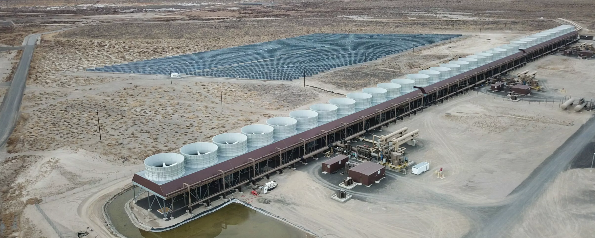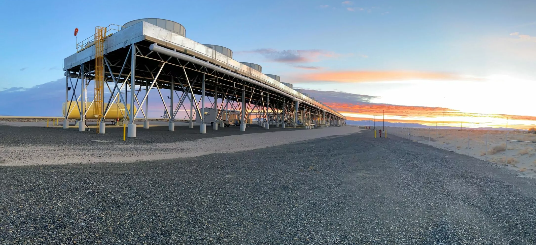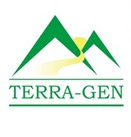Categories: Energy, Engineering, Geothermal
Tags: Engineering
Categories: Energy, Engineering, Geothermal
Tags: Engineering

Geothermal is an essential element in SMUD’s renewable portfolio as they seek to meet the state mandate of 50% renewable energy by 2030 and beyond. As biomass and nuclear become less available, renewable sources—like geothermal– will have to make up the difference in order to meet California’s 50% renewable portfolio standard. As California’s nuclear capacity has diminished over the last few years it is very likely that the last nuclear power station will be shut off in the next decade. Natural gas is relatively inexpensive, readily available and is increasingly used to meet demand. However, it is not renewable and counts against the 50% renewable mandate.
A geothermal plant is a proven renewable energy source and can meet fluctuating needs, such as those caused by the intermittency of solar and wind power. In a 2010 study by the Geothermal Energy Association, geothermal plants provided more than 10,000 megawatts of electricity to 24 countries worldwide. As a continuous, naturally replenishing source of energy, geothermal provides consistent power productions and near-zero emissions. It is called “baseload power” because geothermal provides power around the clock, 24 hours a day, 365 days a year.
Cyrq uses binary technology with two closed loop systems. In the first closed-loop system, the hot geothermal fluid is pumped from the geothermal reservoir to a heat exchanger. In the heat exchanger, heat from the geothermal fluid is transferred to a working fluid contained in the second, separate, and closed-loop system. This working fluid powers the turbines, generating electricity.
The geothermal fluid is then re-injected into the same geothermal reservoir it came from to be naturally reheated resulting in no consumption of the geothermal resource. Neither the geothermal fluid nor the working fluid comes in contact with one another, and neither is exposed to air. Both the geothermal fluid and the working fluid stay enclosed in their own closed loop system the entire time they are in the power plant.

Categories: Geothermal, P
The Soda Lake Geothermal plant is a dual geothermal electric-generating facility situated eight miles north-west of Fallon, Nevada, US. Nevada is the second-ranking US state in terms of geothermal resources. Soda Lake I was launched in 1987 and the second part of the facility, Soda Lake II, has been in operation since 1991.
Alterra Power sold the Soda Lake geothermal facility to an affiliate of Cyrq Energy in January 2015.
Cyrq Energy is a renewable energy company primarily focused on geothermal power development. Cyrq owns and operates the Soda Lake Geothermal Power Plant, the Patua Geothermal Power Plant both in Churchill County along with one geothermal power plant in southern Utah and one geothermal power plant in southwestern New Mexico.


Categories: Geothermal, S


Terra-Gen is one of the largest geothermal energy companies in the U.S., and we have active development efforts underway in the western region, with an emphasis on larger geothermal opportunities (> 20 MW’s). Terra-Gen has assembled a renowned geothermal development team based in our San Diego and Reno development offices, as well as at our operating plants. We are actively acquiring geothermal leases, with a demonstrated commitment and financial capability to actively conduct exploration drilling to develop our lease positions.
| Dixie Valley | |
| Location: | Near Fallon, Nevada |
| Name Plate Rating: | 67 MW + 5 MW Binary Unit |
| Power Sales Agreement: | Agreement with Southern California Edison expiring in July 2018. A new PPA between SCE and Dixie Valley has been executed which will allow Dixie Valley to receive a firm energy price following expiration of the existing PPA. |
| O & M Services: | Terra-Gen Operating Co., LLC |
Categories: Electrical, Geothermal, T